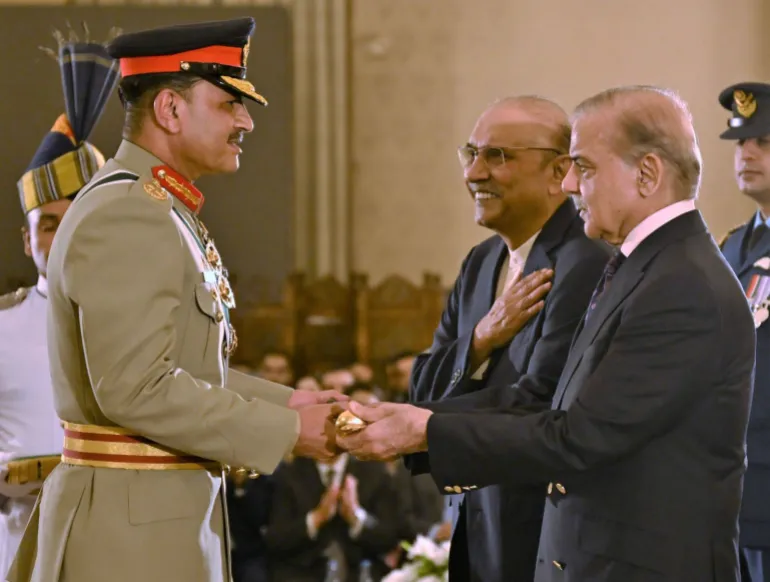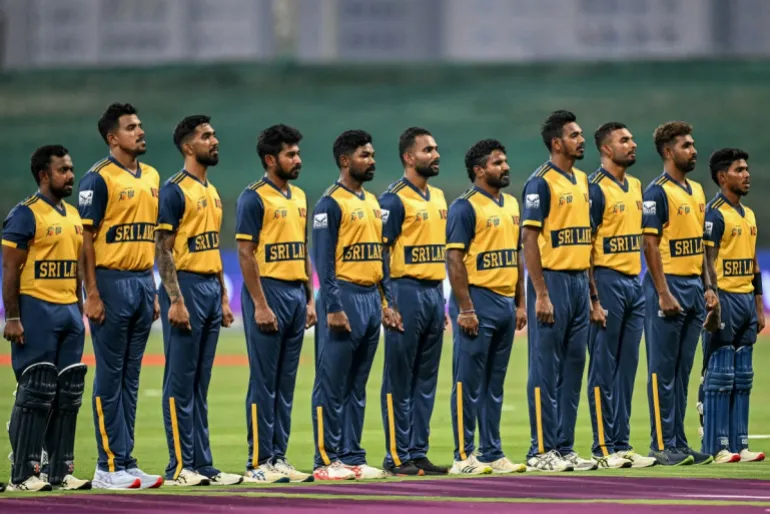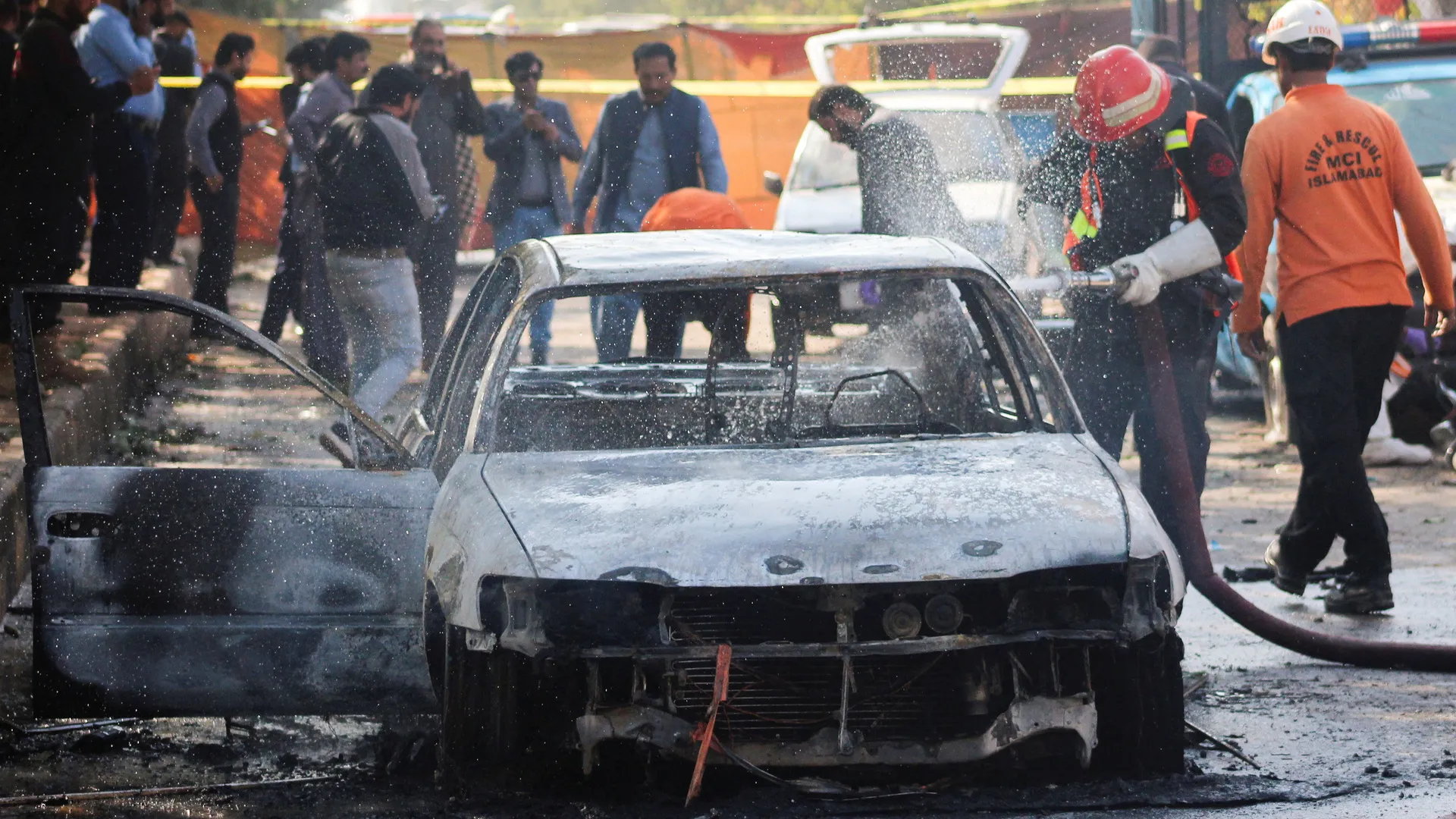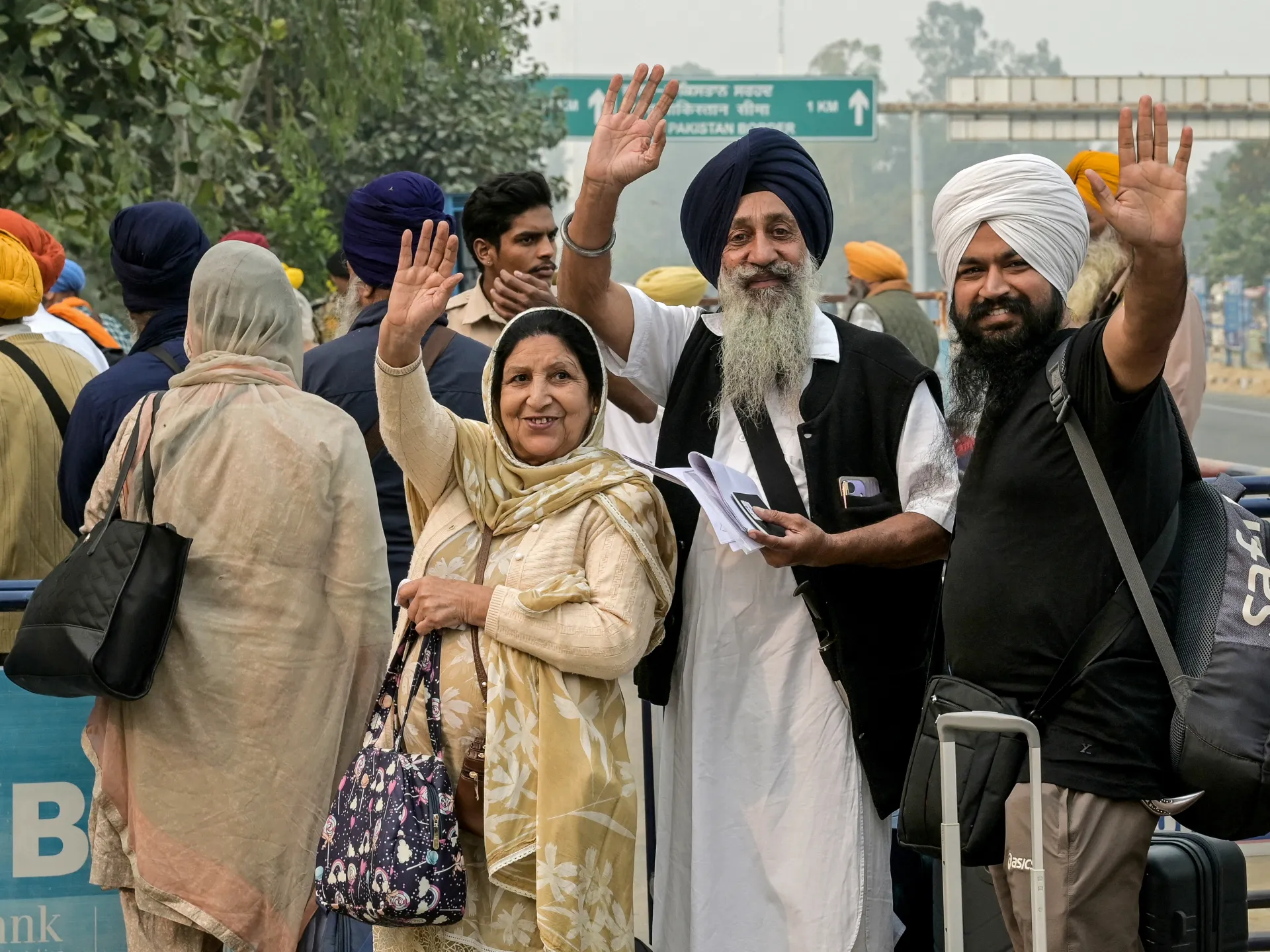India has called the Delhi blast an ‘act of terror’: How will it respond? | Conflict
New Delhi, India – Indian Prime Minister Narendra Modi’s cabinet late Wednesday described the car explosion which jolted New Delhi earlier in the week as a “heinous terror incident, perpetrated by antinational forces”.
The Indian government’s words, two days after a slow-moving car blew up near the Red Fort, an iconic 17th-century monument in New Delhi, killing at least 13 people and wounding several, have since led to questions about how it might respond, raising concerns over the prospect of a new spike in regional tensions.
Earlier this year, in May, the Indian government had declared a new security doctrine: “Any act of terror will be treated as an act of war.”
That posture had come in the aftermath of an intense four-day air war between India and Pakistan, after India blamed Islamabad for an attack in Indian-administered Kashmir that killed 26 civilians.
Now, six months later, as India grapples with another attack – this time, in the heart of the national capital of the world’s most populous country – the Modi government has so far avoided blaming Pakistan.
Instead, say political analysts, New Delhi’s language suggests that it might be veering towards intensifying a crackdown on Kashmir, at a time when Islamophobia and anti-Kashmiri sentiments have skyrocketed across India in the aftermath of the car explosion.

A crackdown in Kashmir
Even before the blast in New Delhi, police teams from Indian-administered Kashmir had been carrying out raids across the national capital region, following a lead from Srinagar, which led to the seizure of a significant amount of explosives and arrests of nearly a dozen individuals.
Among the suspects are several Kashmiri doctors – including Umar Nabi, a junior doctor who is suspected of being the driver of the car that exploded – who were serving in hospitals in satellite towns outside New Delhi.
Since the explosion near the Red Fort, police in Indian-administered Kashmir have detained more than 650 people from across the Valley as they dig deeper into what sections of the Indian media are describing as a “white-collar terror module” that had gathered enough explosives for the biggest attack on India in decades, if members hadn’t been arrested.
Police teams have raided several locations, including the residences of members of banned sociopolitical outfits.
Indian forces on Thursday also demolished the home of Nabi, the alleged car driver. In recent years, Indian authorities have often demolished homes of individuals accused of crimes without any judicial order empowering them to do so, even though the Supreme Court has ordered an end to the practice. Rights groups have described the act of demolishing the homes of suspects as a form of collective punishment.
Students of medicine and practising doctors in Kashmir are also increasingly facing scrutiny – more than 50 have been questioned for hours, and some have had their devices seized for investigation.
“There is a sense of complete disbelief among all of us,” said a junior doctor at a government-run hospital in Srinagar, the capital of the federal territory of Indian-administered Kashmir.
The doctor requested anonymity to speak, fearing repercussions from the police.
The 34-year-old has seen conflict in Kashmir up close, treating injured protesters firsthand for weeks on end, during previous clashes with security forces. “But I never thought that we would be viewed with suspicion like this,” he said, adding that the explosion that killed 13 in New Delhi was “unfortunate and should be condemned”.
“It is unreal to us that a doctor can think of such an attack,” the doctor said. “But how does that malign our entire fraternity? If a professional defects and joins militants, does it mean that all professionals are terrorists?”

‘Away from Pakistan, towards an enemy within’
India and Pakistan have fought three wars over Kashmir since the nations were partitioned in 1947 as the British left the subcontinent. Today, India, Pakistan and China all control parts of Kashmir. India claims all of it, and Pakistan seeks control of all of Kashmir except the parts held by China, its ally.
After the April attack in the resort town of Pahalgam in Indian-administered Kashmir, India had launched missiles deep inside Pakistan. Modi claimed that the attacks killed more than 100 “terrorists”. Pakistan insisted that civilians and soldiers, not armed fighters, were killed. Pakistan, which had rejected Indian accusations of a role in the April killings in Pahalgam, hit back.
Over four days, the nuclear-armed neighbours fired missiles and drones across their contested border, striking each other’s military bases.
When the Modi government agreed to a ceasefire on May 10, it faced domestic criticism from the opposition – and some sections of its own supporters – for not continuing with attacks on Pakistan. The government then said Operation Sindoor is “only on pause, not over”.
Six months later, though, New Delhi has been significantly more cautious about who to blame for the Delhi blast.
“There is a lot of due outrage this time, but there is no mention of Pakistan,” said Anuradha Bhasin, a veteran editor in Kashmir and author of a book, A Dismantled State: The Untold Story of Kashmir After Article 370, about how the region changed under the Hindu majoritarian Modi government. The Kashmir administration has banned her book in the region.
“This time, it is not about a crackdown on Pakistan,” she told Al Jazeera. “The public anger is being directed away from Pakistan, towards ‘an enemy within’.”
She said the Modi government appeared to be aware that finger-pointing at Pakistan “would create pressure from the public to take [military] action” against the neighbour.
Instead, she said, “public anger can be assuaged by creating any enemy.”

‘Pandering to domestic gallery’
Analysts point to the Modi government’s use of the term “antinational forces” to describe the alleged perpetrators of the Delhi attack.
That’s a phrase the Modi government has previously used to describe academics, journalists and students who have criticised it, as well as other protesters and dissidents. Since Modi took office in 2014, India has continuously slid in multiple democracy indices for alleged persecution of minorities in the country and its crackdown on press freedom.
To Sumantra Bose, a political scientist whose work focuses on the intersection of nationalism and conflict in South Asia, the Indian cabinet resolution was significant in the way that it shied “away from naming and blaming Pakistan, which was a rather reflexive reaction for decades”.
After the fighting in May, the Indian government learned, the hard way, Bose said, that “there is no appetite and indeed no tolerance anywhere in the world for a military escalation in South Asia.”
Bose was referring to the lukewarm global support that India received after it bombed Pakistan without providing any public evidence of Islamabad’s links with the attackers in Pahalgam.
Instead, India was left disputing the repeated assertions of United States President Donald Trump that he had brokered the ceasefire between New Delhi and Islamabad, even as he hosted Pakistan’s army chief, praised him, and strengthened ties with India’s western neighbour. India has long held the position that all disputes with Pakistan must be resolved bilaterally, without intervention from any other country.
The contrast in New Delhi’s response to this week’s blast, so far, appears to have struck US State Secretary Marco Rubio, too.
Reacting to the Delhi blast, Rubio said “it clearly was a terrorist attack,” and “the Indians need to be commended. They’ve been very measured, cautious, and very professional on how they’re carrying out this investigation.”
India’s new security doctrine – that an act of terror is an act of war – “was a dangerous, slippery slope”, said Bose, who has also authored books on the conflict in Kashmir. His last work, Kashmir at the Crossroads: Inside a 21st-Century Conflict, published in 2021, is also banned in Kashmir.
The doctrine, he said, was aimed at pandering to Modi’s “domestic gallery” – a way of showing muscular strength, even at the risk of “serious military escalation” between India and Pakistan.
Now, by using terms like “white-collar terrorism”, analysts said Indian officials risked blurring the line between Kashmiri Muslims and armed rebels fighting Indian rule.
“The term doesn’t make sense to me, but it does put the needle of suspicion on young, educated Muslim professionals,” said Bose.
“The fact has been for decades that militants come from all sorts of social backgrounds in Kashmir – from rural farming families, working-class backgrounds, to educated professionals,” Bose argued. “If anything, it reflects the discontent that has been in the society across the groups.”
Bhasin, the editor from Kashmir, said the Indian government’s posture would lead to “adverse economic impact for Kashmiri Muslims and further ghettoisation, where they find it harder to get jobs or a place to rent”.

‘Everyone is so scared’
Kashmiris across India are already facing the brunt of hate and anger following the Delhi blast.
Since the bomb exploded on Monday in New Delhi, Indian social media platforms have been rife with rampant hate speech against Muslims.
Nasir Khuehami, the national convener of a Kashmiri student association, has spent four days fielding calls from Kashmiri Muslims.
“Across northern Indian states, Kashmiris are being asked to vacate their homes, there is active profiling going on, and everyone is so scared,” Khuehami told Al Jazeera, speaking from his home in Kashmir.
This is only the latest instance of this pattern playing out: An attack in Kashmir, or by a Kashmiri armed rebel, has often led to harassment and beating of Kashmiri Muslims – students, professionals, traders, or even labourers – living in India.
Khuehami said “to end this endless cycle of crises for Kashmiris” – where they are detained at home and abused outside – “the government needs to take confidence-building measures.”
Otherwise, Khuehami said, the Modi government was marginalising Kashmiris in India. By doing that, he said, India would be playing into the hands of the very country it accuses of wanting to grab Kashmir: Pakistan.


![President Asif Ali Zardari and Prime Minister Muhammad Shehbaz Sharif jointly conferred the baton of Field Marshal upon Chief of Army Staff (COAS) Field Marshal Syed Asim Munir during a special investiture ceremony at Aiwan-e-Sadr in Islamabad. [Handout/Government of Pakistan]](https://i0.wp.com/www.aljazeera.com/wp-content/uploads/2025/11/credit-government-of-pakistan-1762792614.jpg?w=640&ssl=1)




